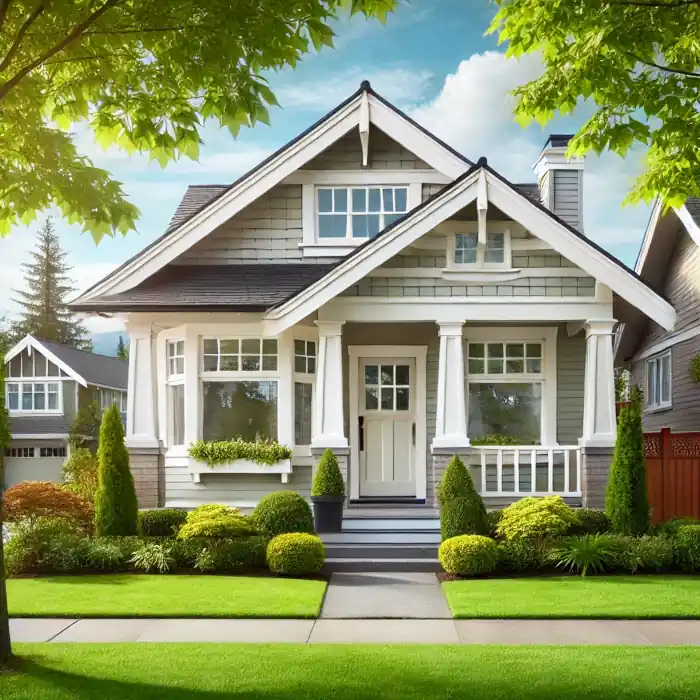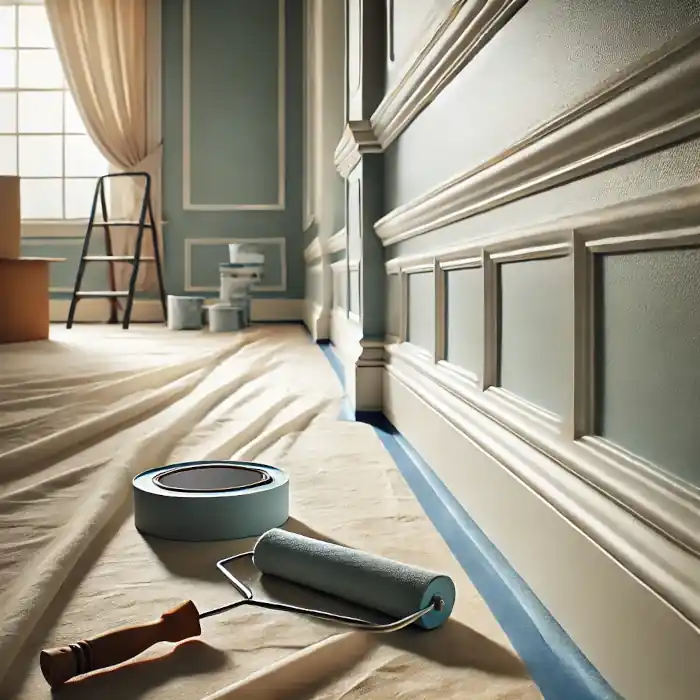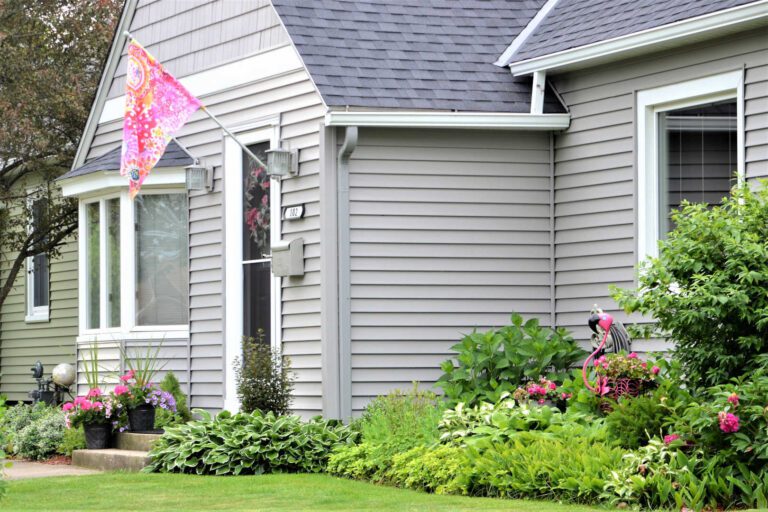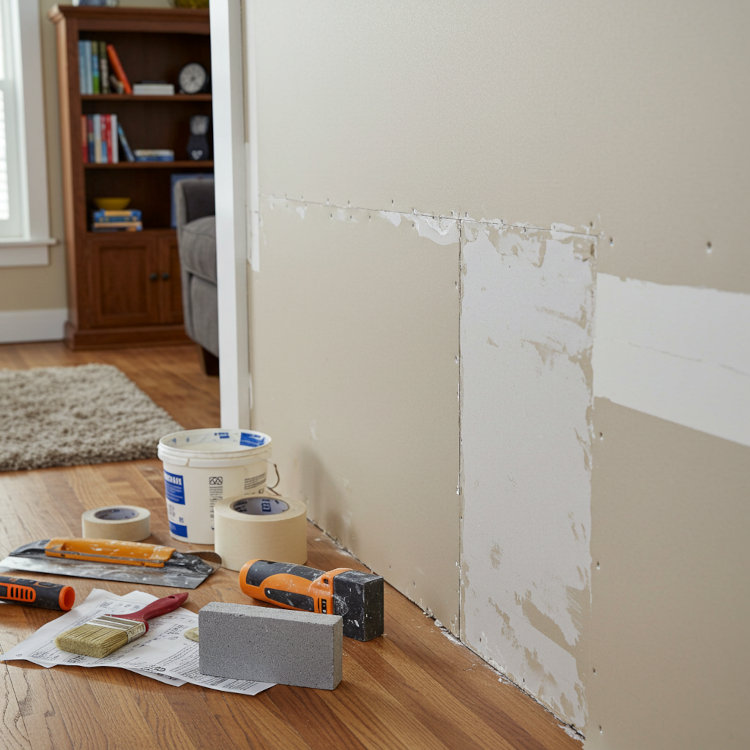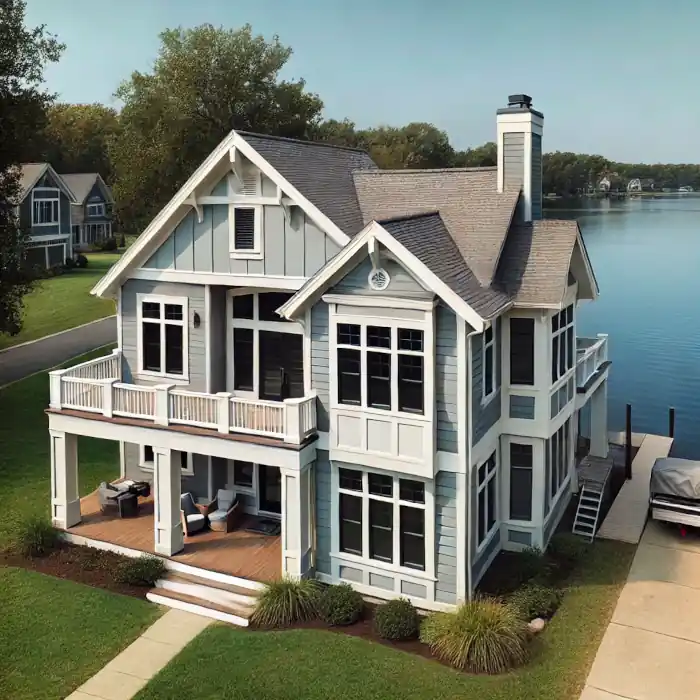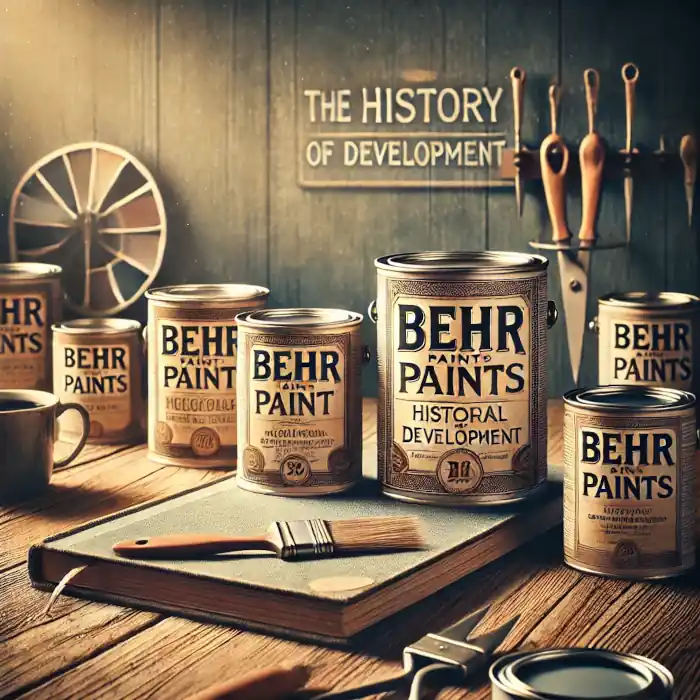As an Amazon Associate, I earn from qualifying purchases. Privacy Policy / Terms
Peeling paint is a common issue that can make your home look neglected and worn. Whether it’s on interior walls or exterior siding, peeling paint is more than just an eyesore—it can indicate underlying problems that need attention. In this blog post, we’ll explore the most common causes of peeling paint and practical solutions to fix and prevent it.
Common Causes of Peeling Paint
1. Moisture and Water Damage
One of the leading causes of peeling paint is moisture. When water seeps into walls, it breaks the bond between the paint and the surface, causing bubbling, cracking, and eventually peeling.
Common Sources of Moisture:
- Roof or plumbing leaks
- Poor ventilation (especially in bathrooms and kitchens)
- Condensation from HVAC systems
- Exterior wall cracks allowing rainwater to penetrate
How to Identify:
- Blisters or bubbles under the paint
- Soft, damp drywall or plaster
- Mildew or mold near the peeling area
Solution:
- Find and repair the source of the water leak.
- Use moisture-resistant paint or primer, especially in humid areas.
- Install proper ventilation, such as exhaust fans, in bathrooms and kitchens.
2. Poor Surface Preparation
Skipping or rushing surface preparation is a guaranteed way to experience peeling paint. Proper surface prep is essential for paint to adhere correctly.
Common Mistakes:
- Painting over dirt, dust, or grease
- Failing to remove old, loose paint
- Skipping primer, especially on porous surfaces
- Not sanding glossy surfaces
How to Identify:
- Peeling or flaking shortly after painting
- Paint coming off in sheets when touched
Solution:
- Thoroughly clean and sand surfaces before painting.
- Use a high-quality primer suitable for the surface.
- Remove any old, peeling paint with a scraper before repainting.
3. Using Low-Quality Paint or Primer
Cheaper paint products often contain fewer binders, which means they don’t adhere as well or last as long. Additionally, using the wrong type of paint for a surface can cause compatibility issues.
Common Mistakes:
- Using interior paint on exterior surfaces
- Skipping primer or using a low-quality one
- Applying paint from unknown or unreliable brands
How to Identify:
- Fading and cracking within a year or two
- Paint easily chips when scratched
Solution:
- Invest in high-quality paints and primers from reputable brands.
- Use paints designed specifically for the surface (e.g., exterior-grade paint for outdoor surfaces).
4. Temperature and Humidity Issues During Application
Painting under the wrong environmental conditions can prevent proper curing, leading to adhesion problems.
Common Mistakes:
- Painting in high humidity, which causes moisture to get trapped
- Painting in extreme heat, which causes the paint to dry too quickly
- Painting in cold temperatures, which prevents the paint from curing properly
How to Identify:
- Paint cracking or peeling shortly after application
- Uneven finish or texture
Solution:
- Paint only in suitable conditions (between 50°F and 85°F with low humidity).
- Use paint designed for the local climate.
5. Incompatible Paint Layers
Applying latex paint over oil-based paint without proper preparation can cause the topcoat to peel. This is because the two types of paint expand and contract differently.
How to Identify:
- The new paint peels off easily in large sheets
- The surface underneath remains intact while only the topcoat fails
Solution:
- Determine the type of paint previously used (test with a rubbing alcohol swab—latex paint dissolves, oil-based does not).
- Sand and prime oil-based surfaces before applying latex paint.
6. Natural Aging and Wear
Paint doesn’t last forever. Over time, exposure to the elements causes it to degrade and peel.
How to Identify:
- Paint fades, cracks, and peels uniformly across the surface
- No apparent moisture or structural issues
Solution:
- Plan to repaint every 5–10 years, depending on exposure and wear.
- Use paints with UV protection for exterior surfaces.
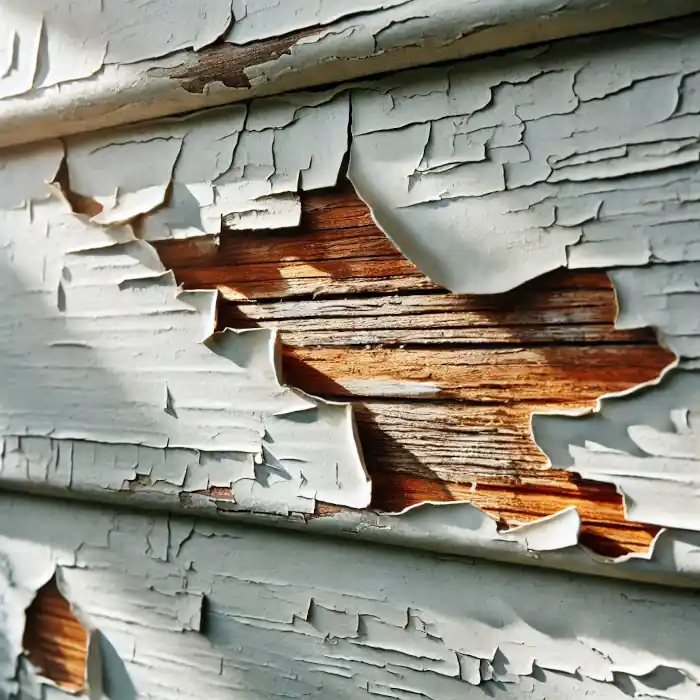
How to Fix Peeling Paint
Once you’ve identified the cause, follow these steps to repair the affected area:
1: Safety First
- Wear protective gear, including gloves, a mask, and goggles.
- If your home was built before 1978, test for lead paint and follow EPA safety guidelines for removal.
2: Remove Loose Paint
- Scrape off peeling paint using a putty knife or paint scraper.
- Sand the area smooth to remove any remaining edges or rough spots.
3: Repair Surface Damage
- Fill cracks, holes, or dents with spackle or wood filler, depending on the surface.
- Allow it to dry completely and sand smooth.
4: Clean the Surface
- Wipe down the area with a damp cloth to remove dust and debris.
- Let the surface dry thoroughly before proceeding.
5: Apply Primer
- Use a high-quality primer suitable for the surface type.
- Allow the primer to dry completely according to the manufacturer’s instructions.
6: Repaint the Surface
- Use high-quality paint appropriate for the area (interior, exterior, moisture-resistant, etc.).
- Apply two coats for optimal coverage and durability, allowing proper drying time between coats.
How to Prevent Paint from Peeling
- Choose the Right Paint: Use high-quality, surface-appropriate paints with moisture-resistant properties for bathrooms, kitchens, and exteriors.
- Prepare Surfaces Properly: Always clean, sand, and prime surfaces before painting.
- Paint in Ideal Conditions: Avoid painting in extreme temperatures or high humidity.
- Ensure Proper Ventilation: Use exhaust fans in bathrooms and kitchens to prevent moisture buildup.
- Address Structural Issues: Repair cracks, leaks, and other damage promptly.
Frequently Asked Questions
Can I paint over peeling paint?
No, painting over peeling paint will result in further peeling. You must remove the loose paint, repair the surface, and apply primer before repainting.
How long should paint last before peeling?
With proper surface preparation and high-quality materials, interior paint can last 7–10 years, while exterior paint should last 5–10 years, depending on weather conditions.
What type of primer should I use to prevent peeling?
Use a stain-blocking primer for water-damaged areas and an oil-based or bonding primer for surfaces with adhesion issues.
Can humidity cause paint to peel?
Yes, high humidity can prevent paint from curing properly, leading to peeling. Proper ventilation is essential to prevent this issue.
Final Thoughts
Peeling paint is a frustrating but solvable problem. By understanding the causes and following proper preparation and application techniques, you can restore your walls and surfaces to their former glory. Addressing issues early not only preserves your home’s appearance but also protects it from further damage.
If you need professional painting services or advice, consider reaching out to a trusted local painter. They have the experience and tools to get the job done right the first time.
Views Expressed Disclaimer
The views, opinions, and information presented in this article are for informational purposes only and do not necessarily reflect the official policies or positions of Chagrin Falls Painting. While every effort has been made to ensure accuracy, Chagrin Falls Painting is not liable for any errors, omissions, or decisions made based on the content provided. Readers are encouraged to consult professionals for specific advice or assistance related to their unique circumstances.


